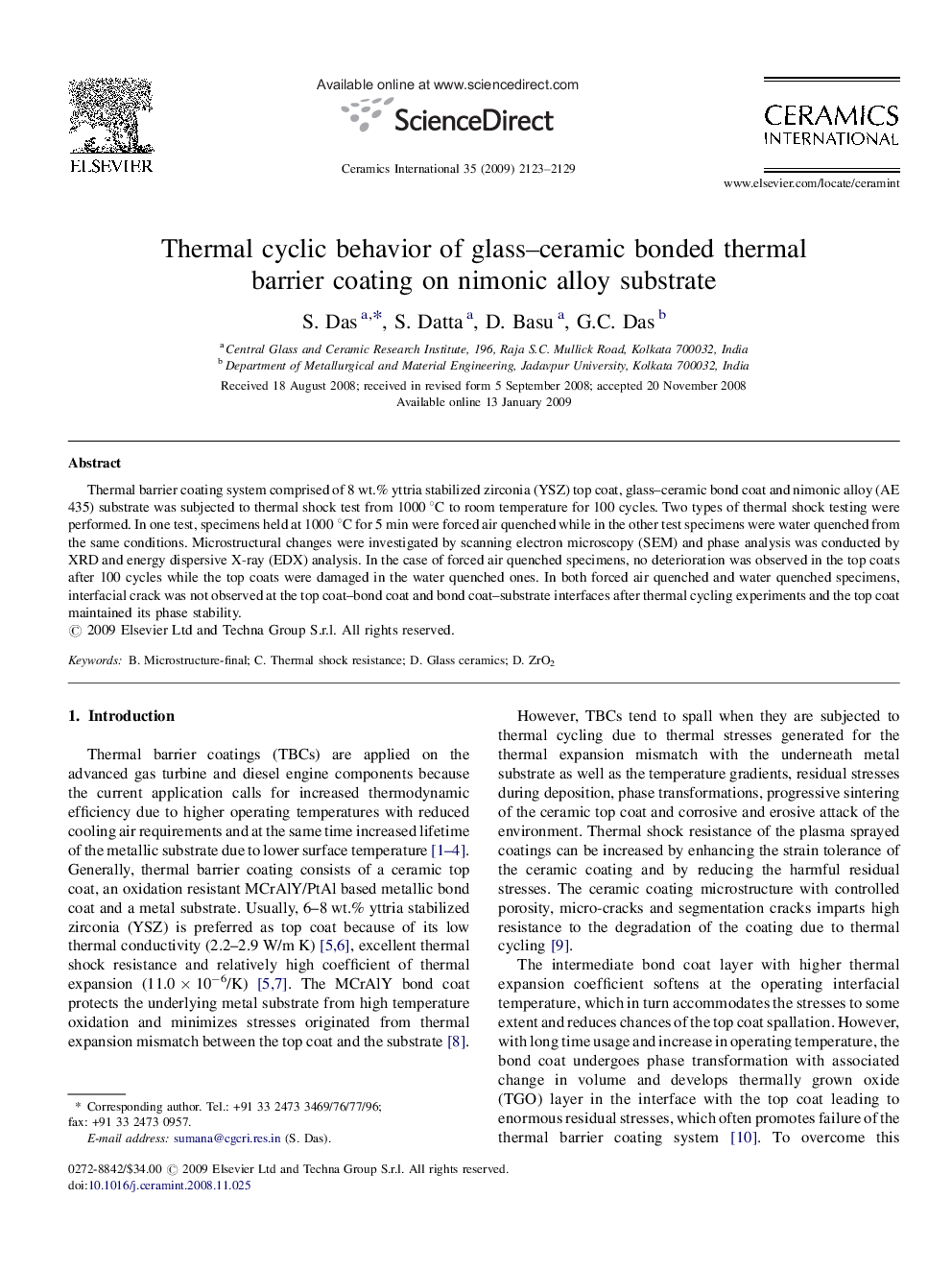| Article ID | Journal | Published Year | Pages | File Type |
|---|---|---|---|---|
| 1465200 | Ceramics International | 2009 | 7 Pages |
Thermal barrier coating system comprised of 8 wt.% yttria stabilized zirconia (YSZ) top coat, glass–ceramic bond coat and nimonic alloy (AE 435) substrate was subjected to thermal shock test from 1000 °C to room temperature for 100 cycles. Two types of thermal shock testing were performed. In one test, specimens held at 1000 °C for 5 min were forced air quenched while in the other test specimens were water quenched from the same conditions. Microstructural changes were investigated by scanning electron microscopy (SEM) and phase analysis was conducted by XRD and energy dispersive X-ray (EDX) analysis. In the case of forced air quenched specimens, no deterioration was observed in the top coats after 100 cycles while the top coats were damaged in the water quenched ones. In both forced air quenched and water quenched specimens, interfacial crack was not observed at the top coat–bond coat and bond coat–substrate interfaces after thermal cycling experiments and the top coat maintained its phase stability.
